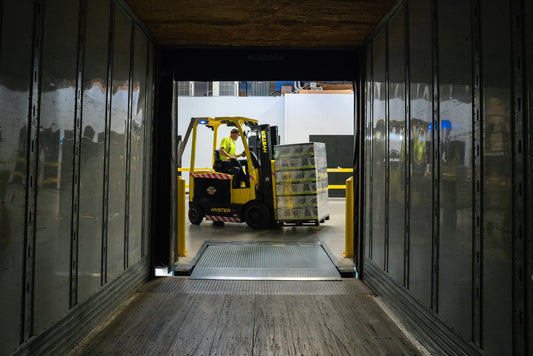
Strickworth SW30 3 Ton Forklift Truck.
Introducing the Strickworth SW30 3 Ton Forklift Truck – the ultimate solution for your lifting needs. This forklift combines power, precision, flexibility, safety, and affordability, making it a top choice for diverse lifting tasks.
Strickworth Forklift Trucks empower your material handling operations with a winning combination of robust engines and top-notch forklift parts. Our trucks are engineered for power, efficiency, and durability, ensuring seamless performance in various industries. Equipped with powerful engines, our forklifts tackle heavy loads with ease, enhancing productivity and reducing downtime.
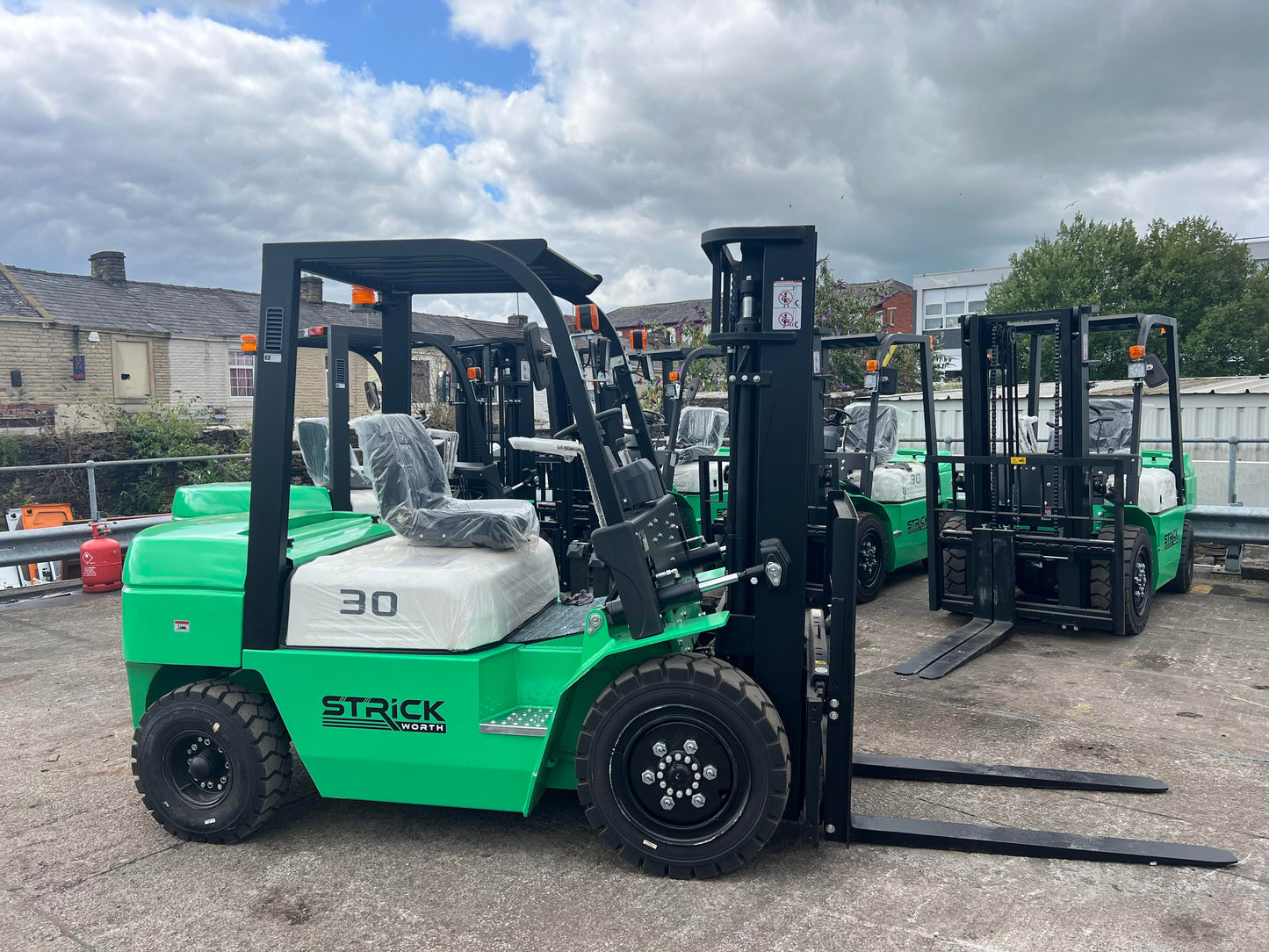
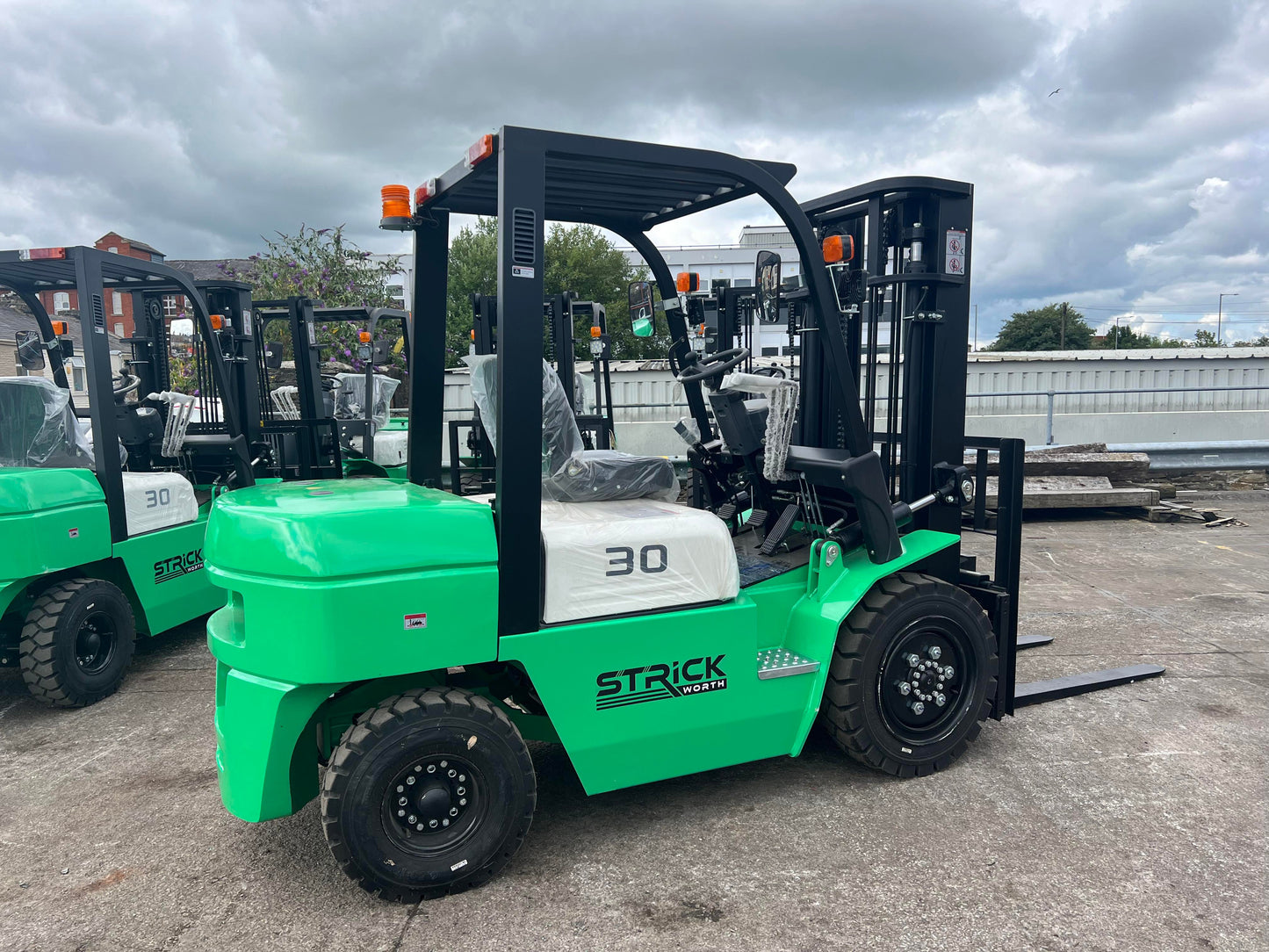
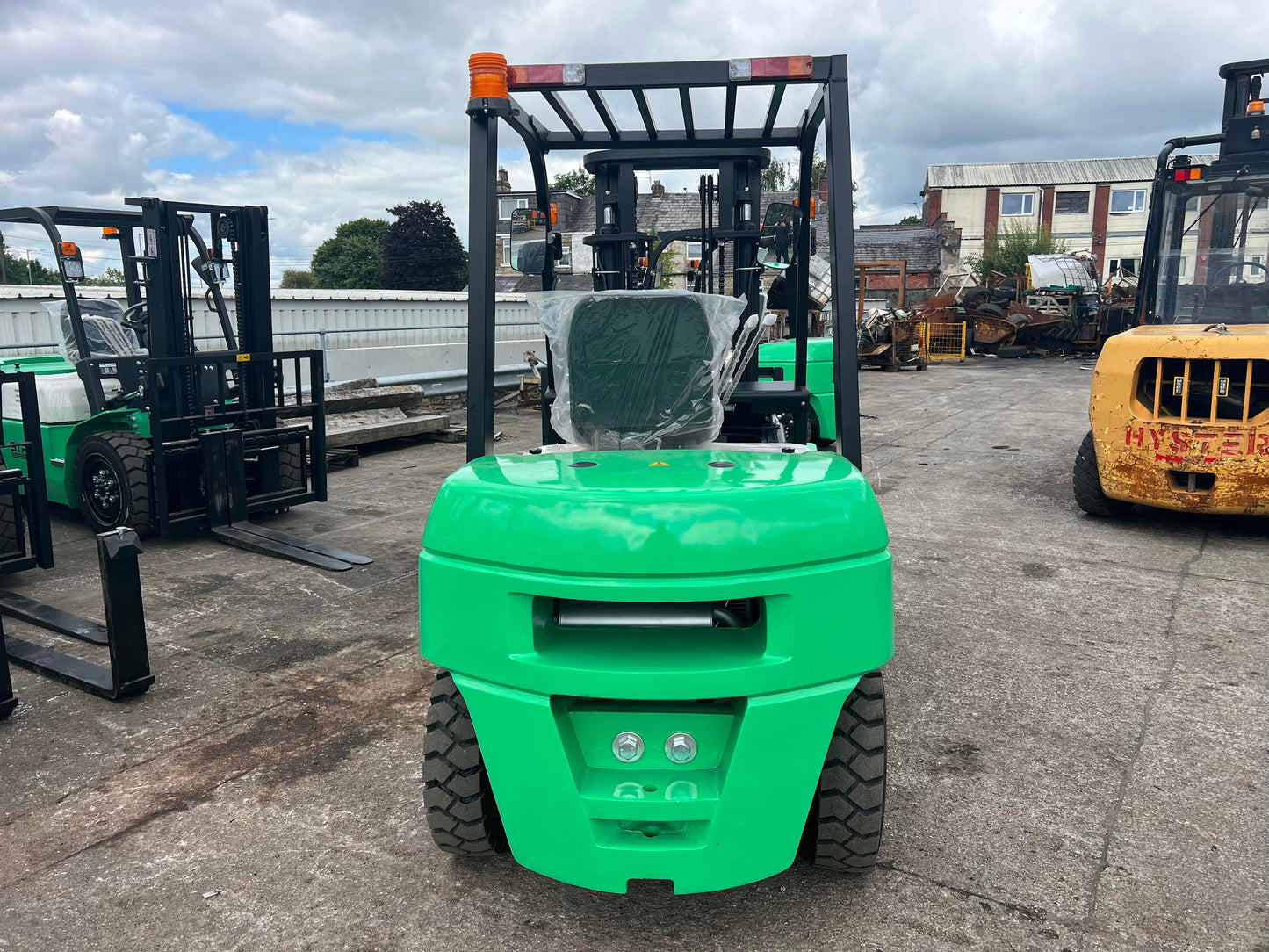

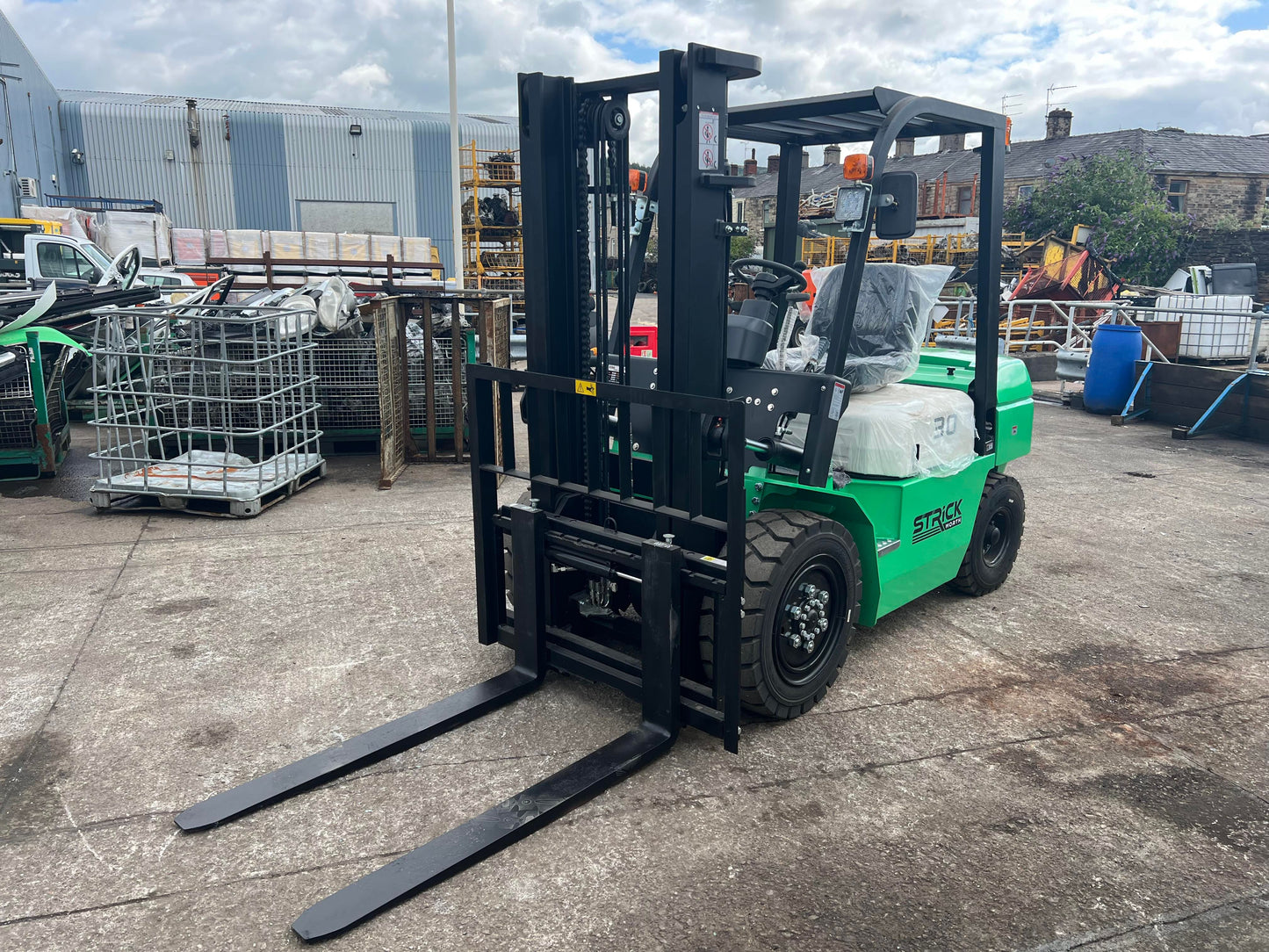
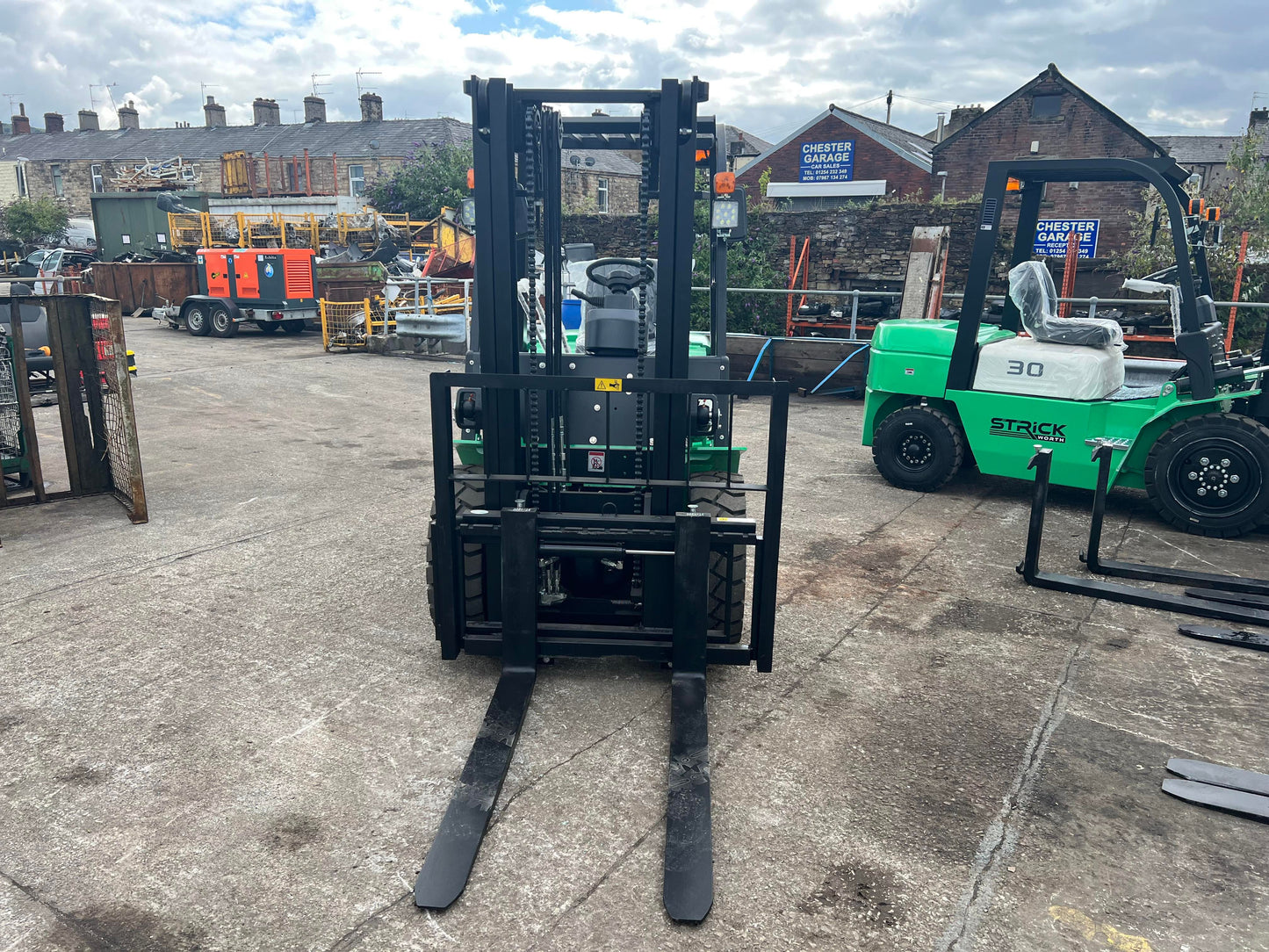
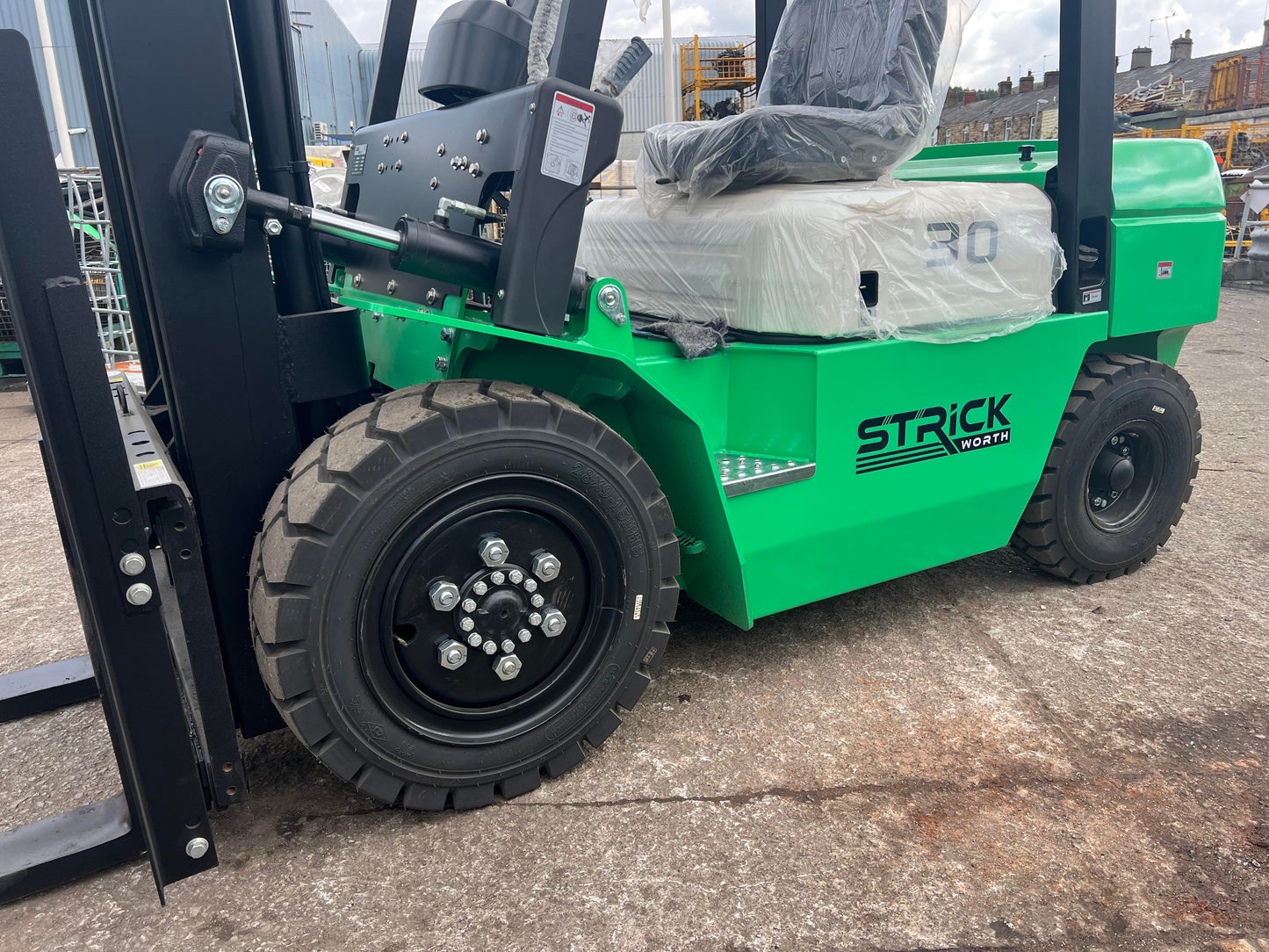
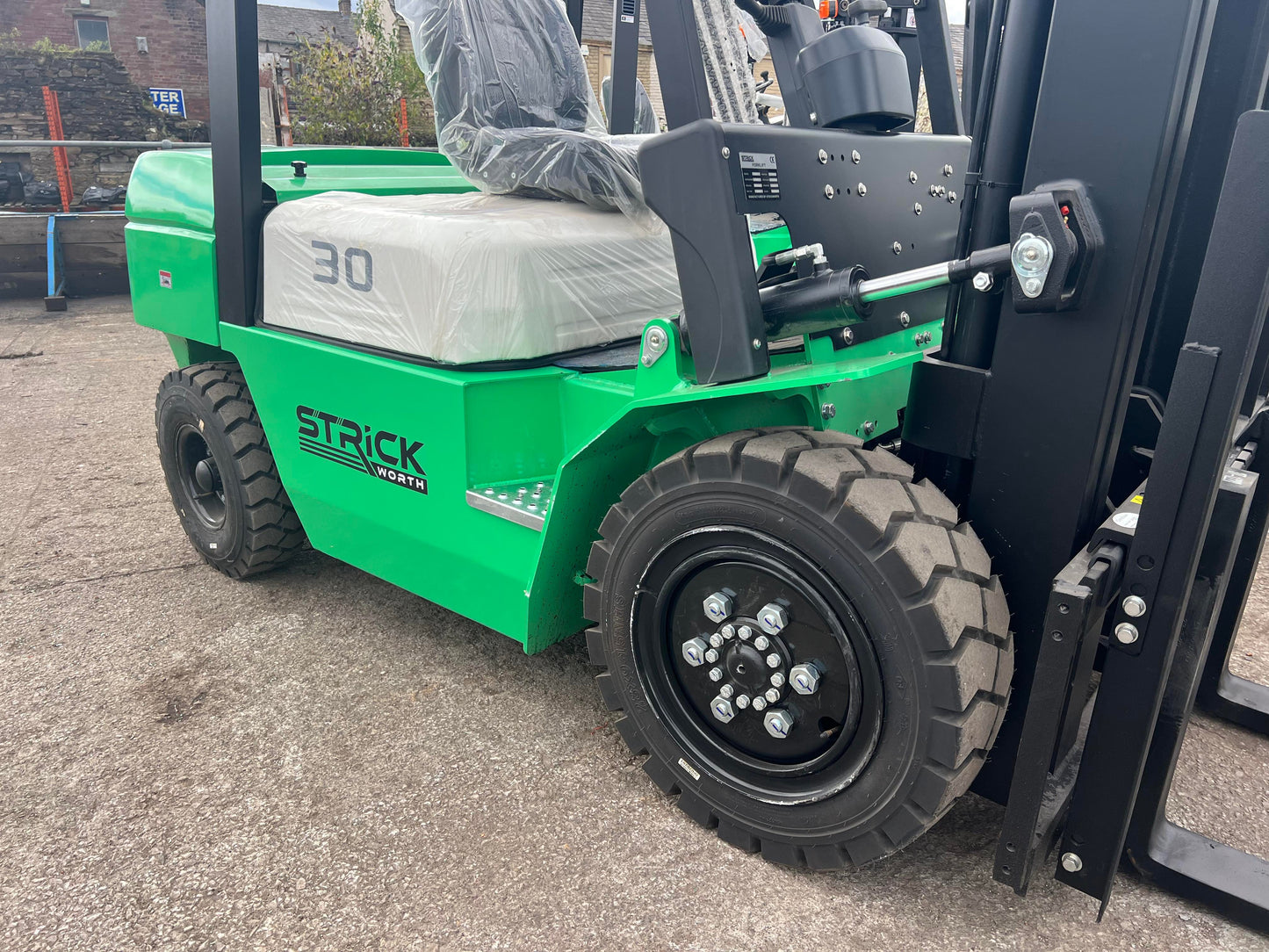
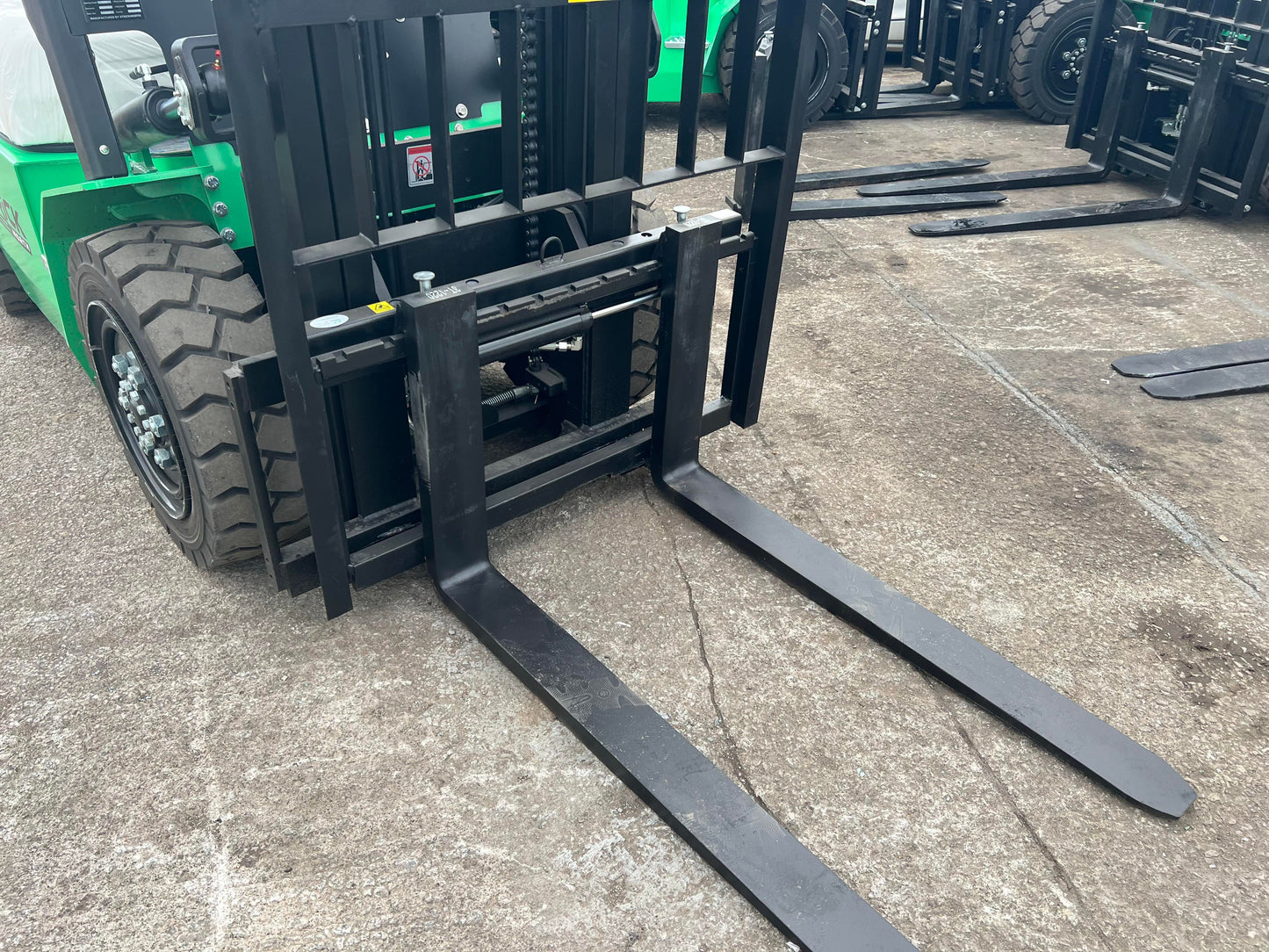
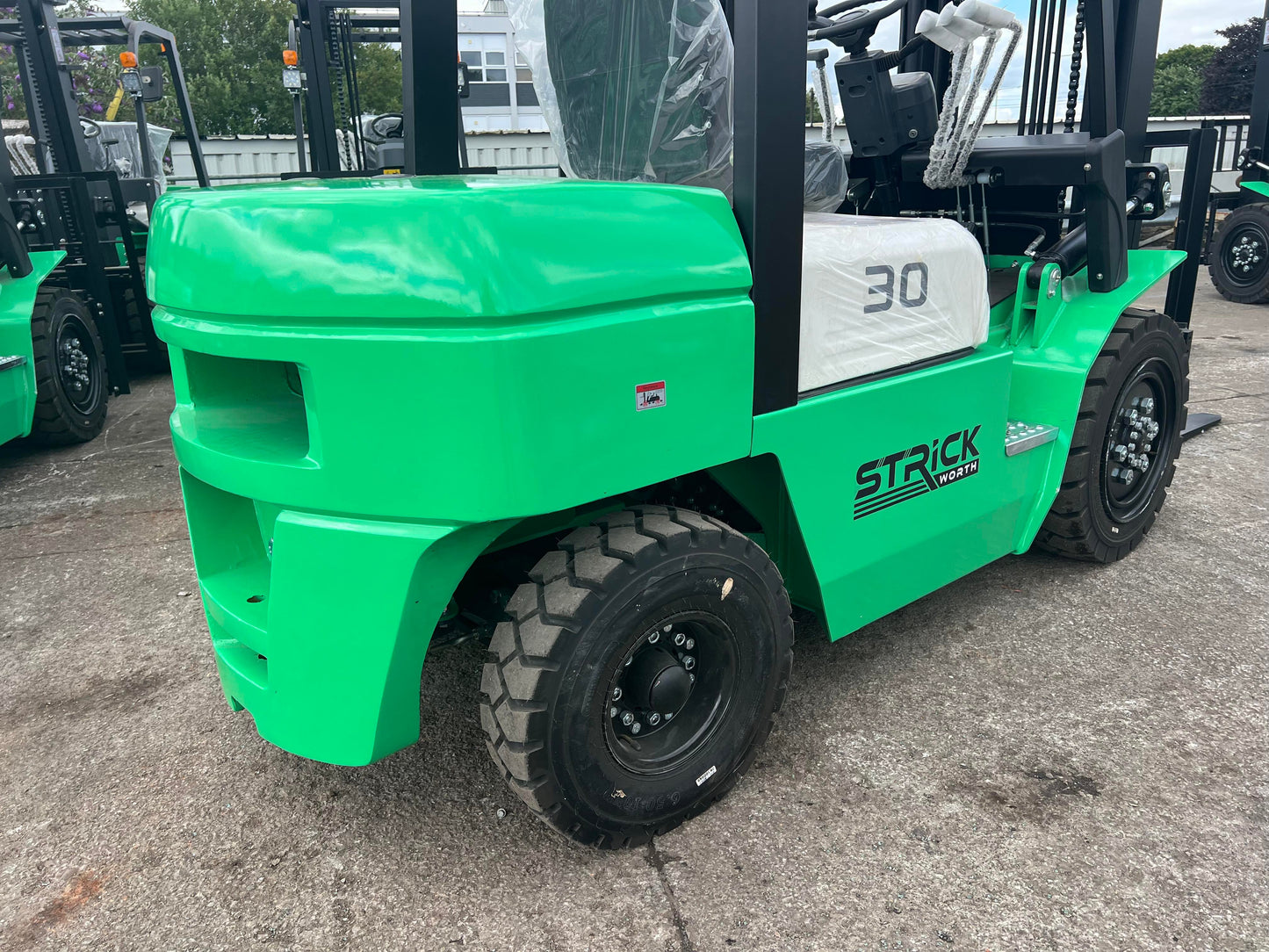
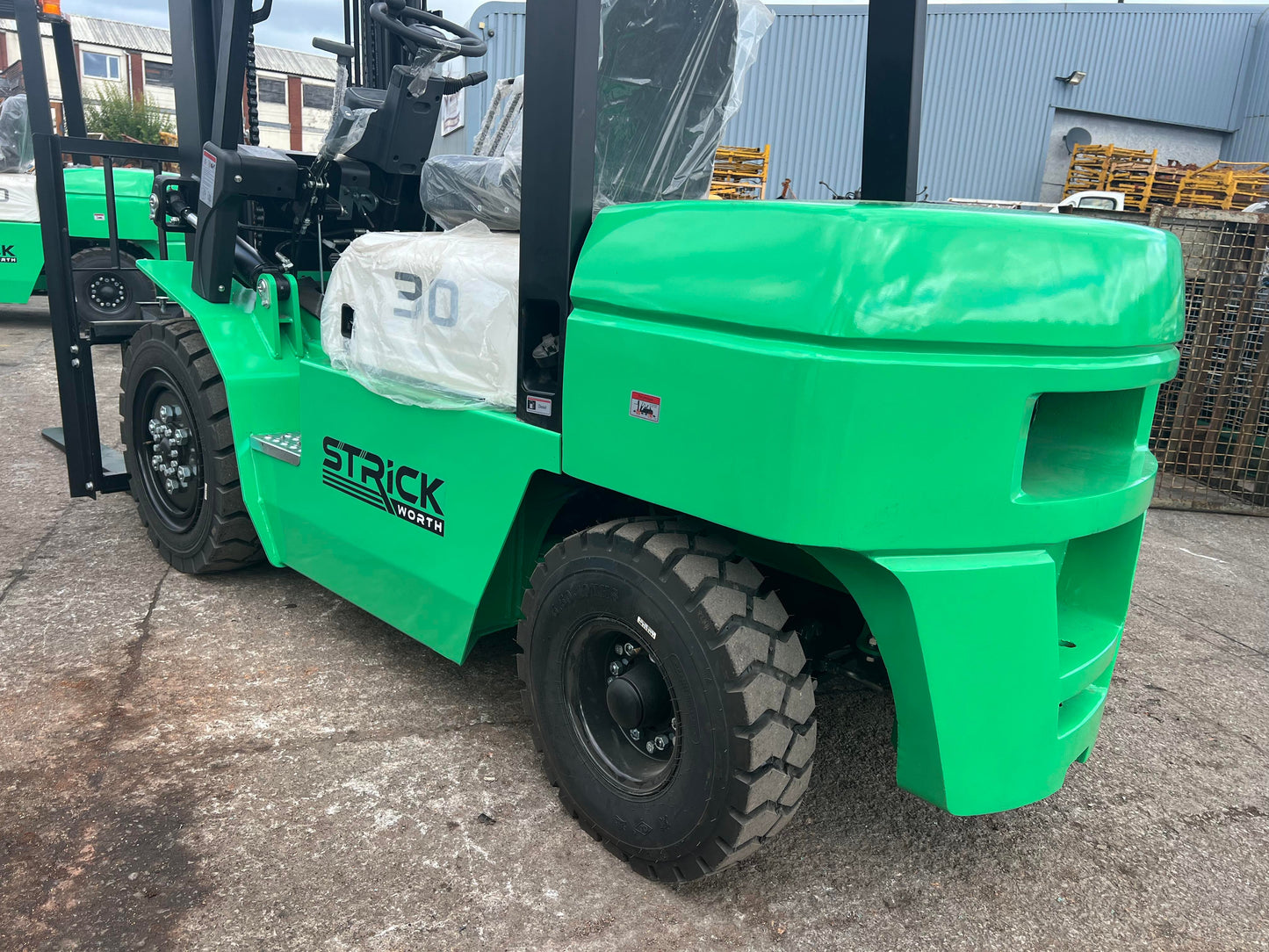
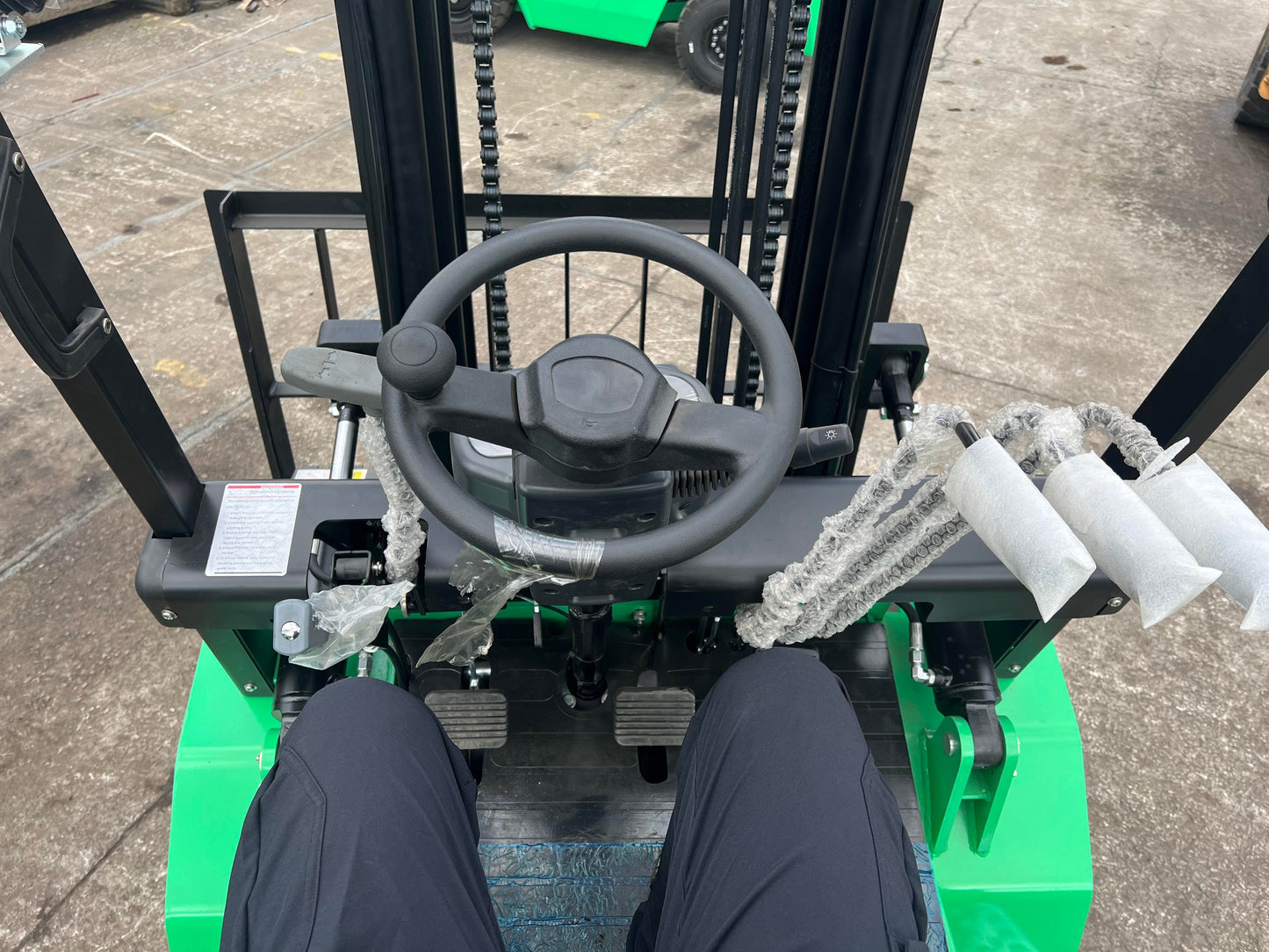
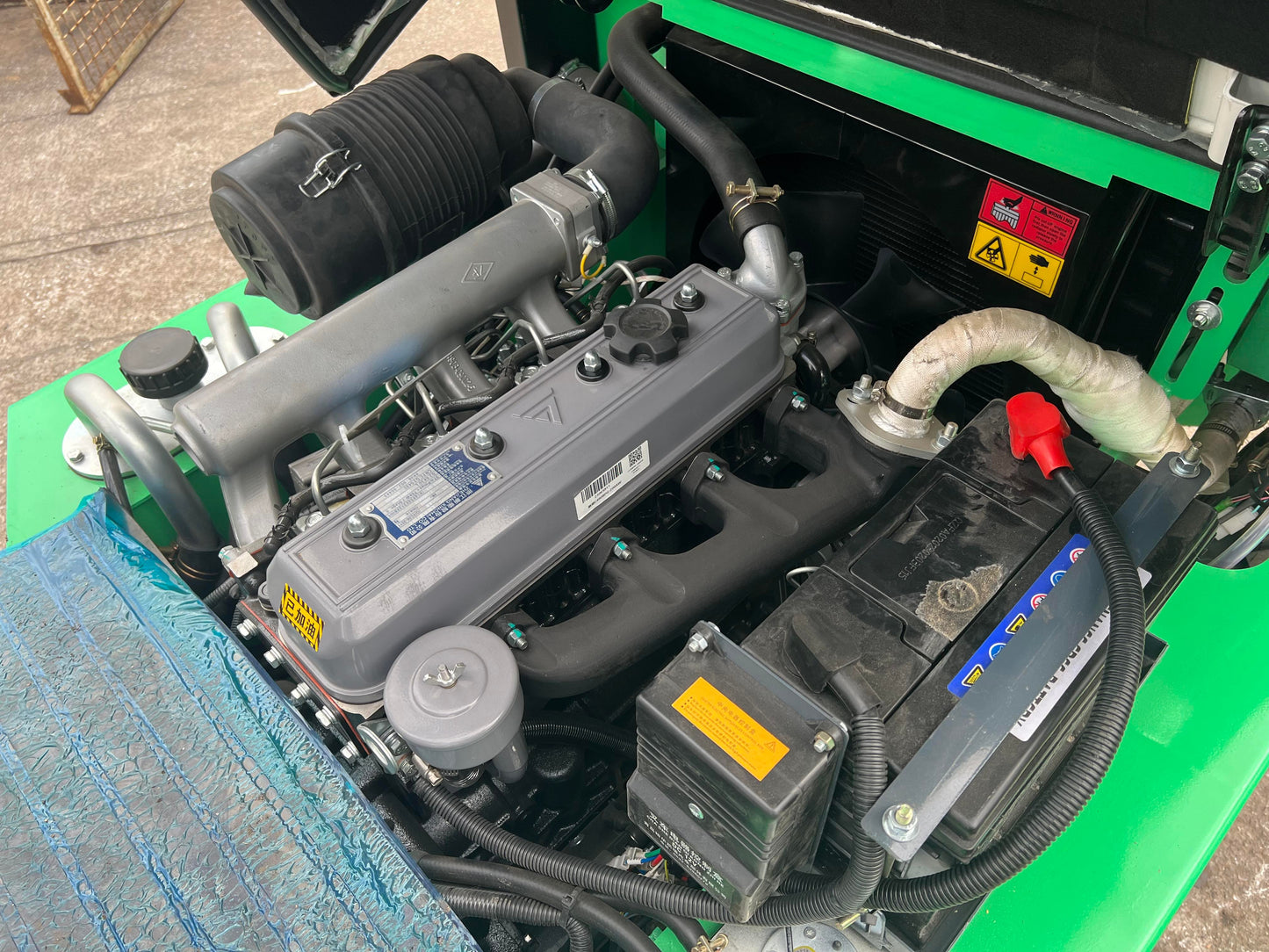
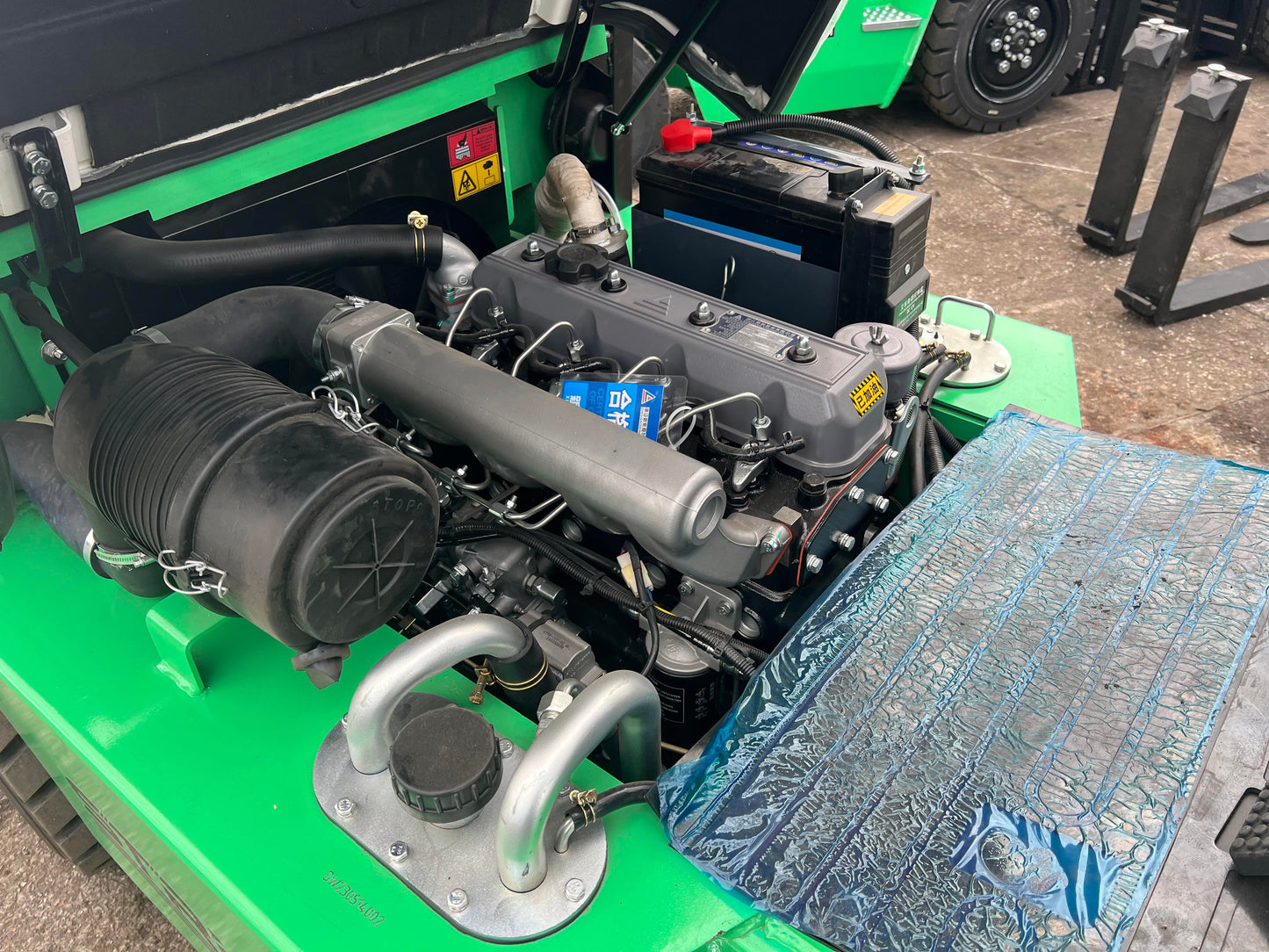
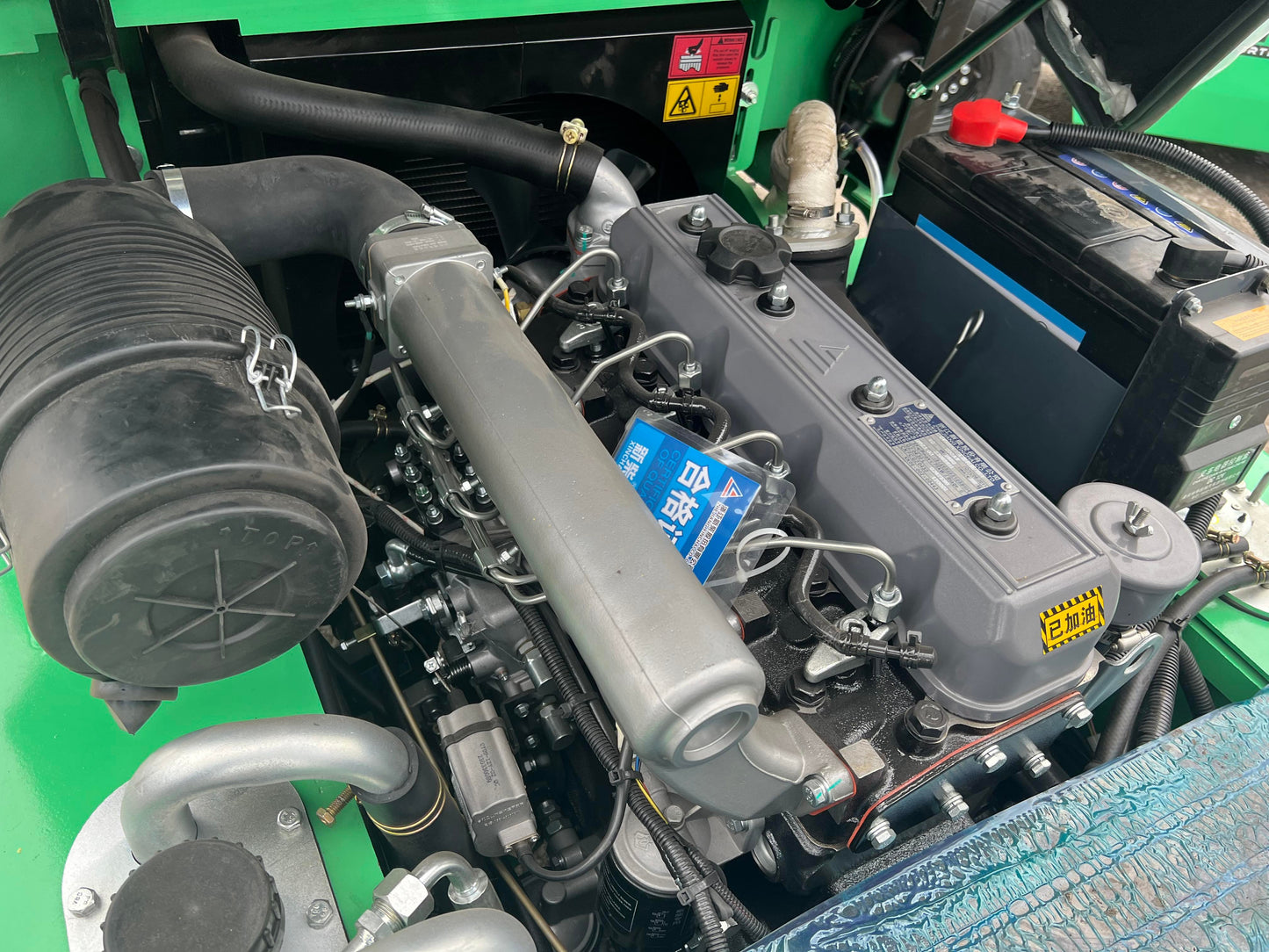
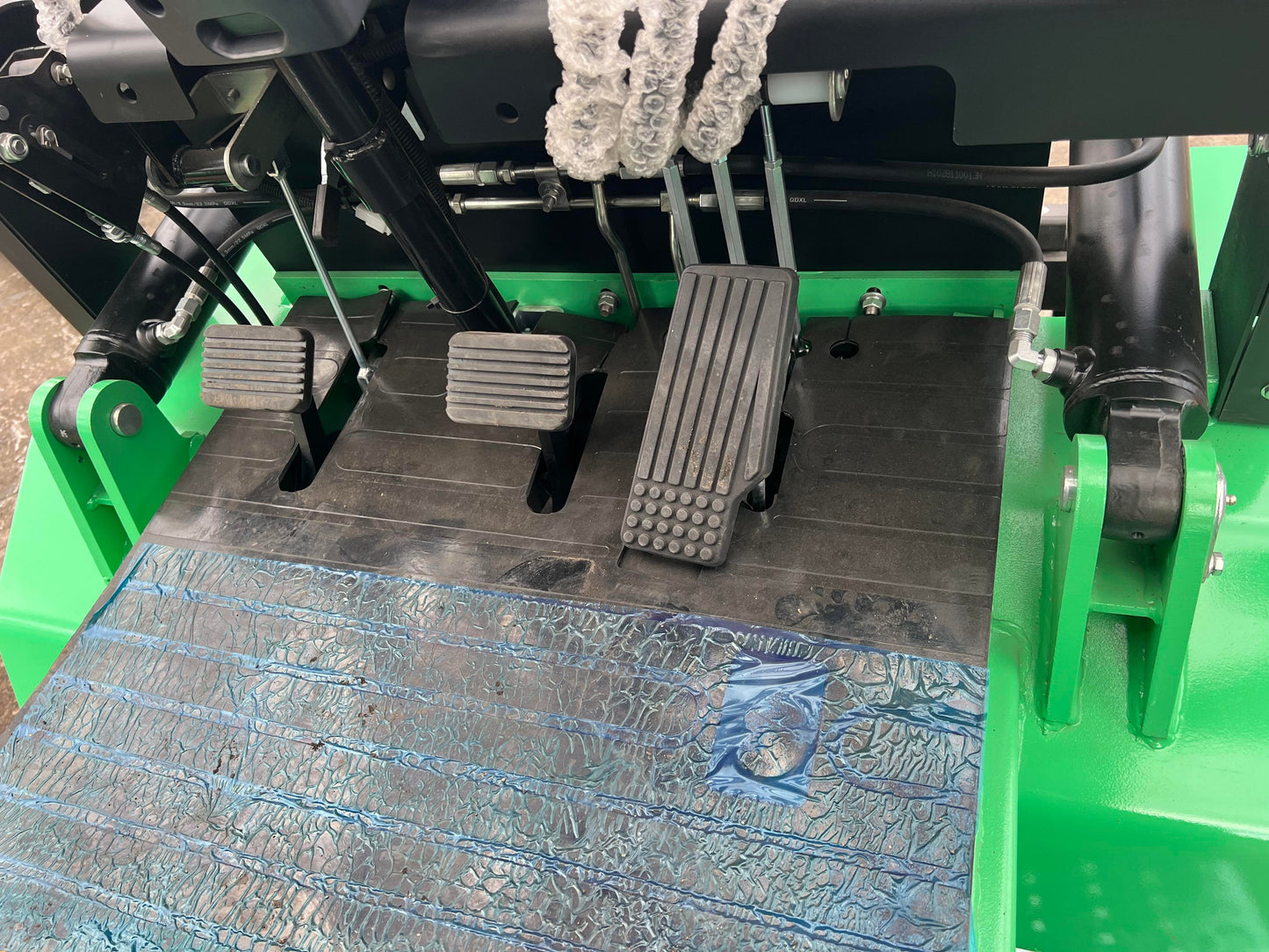
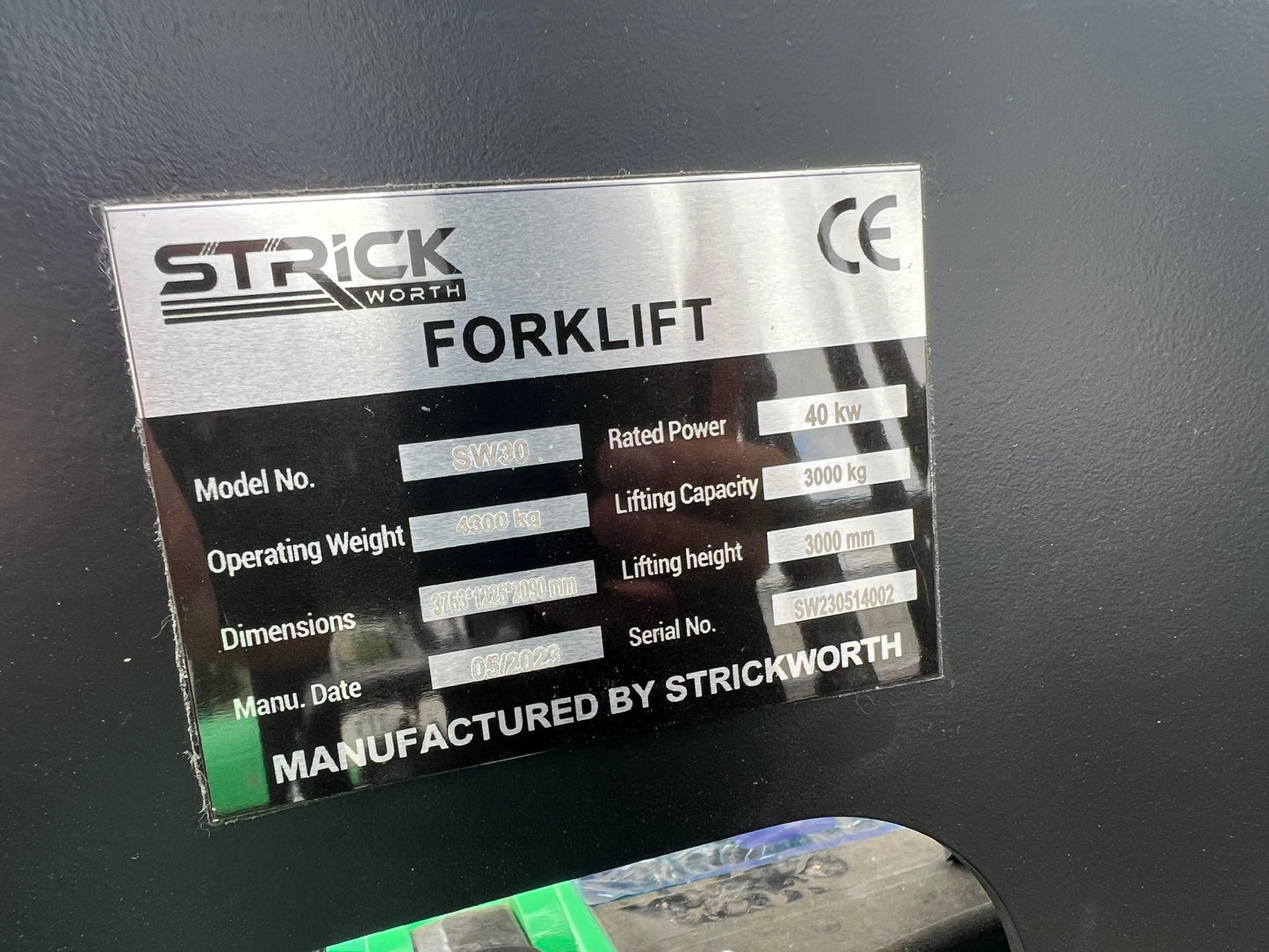
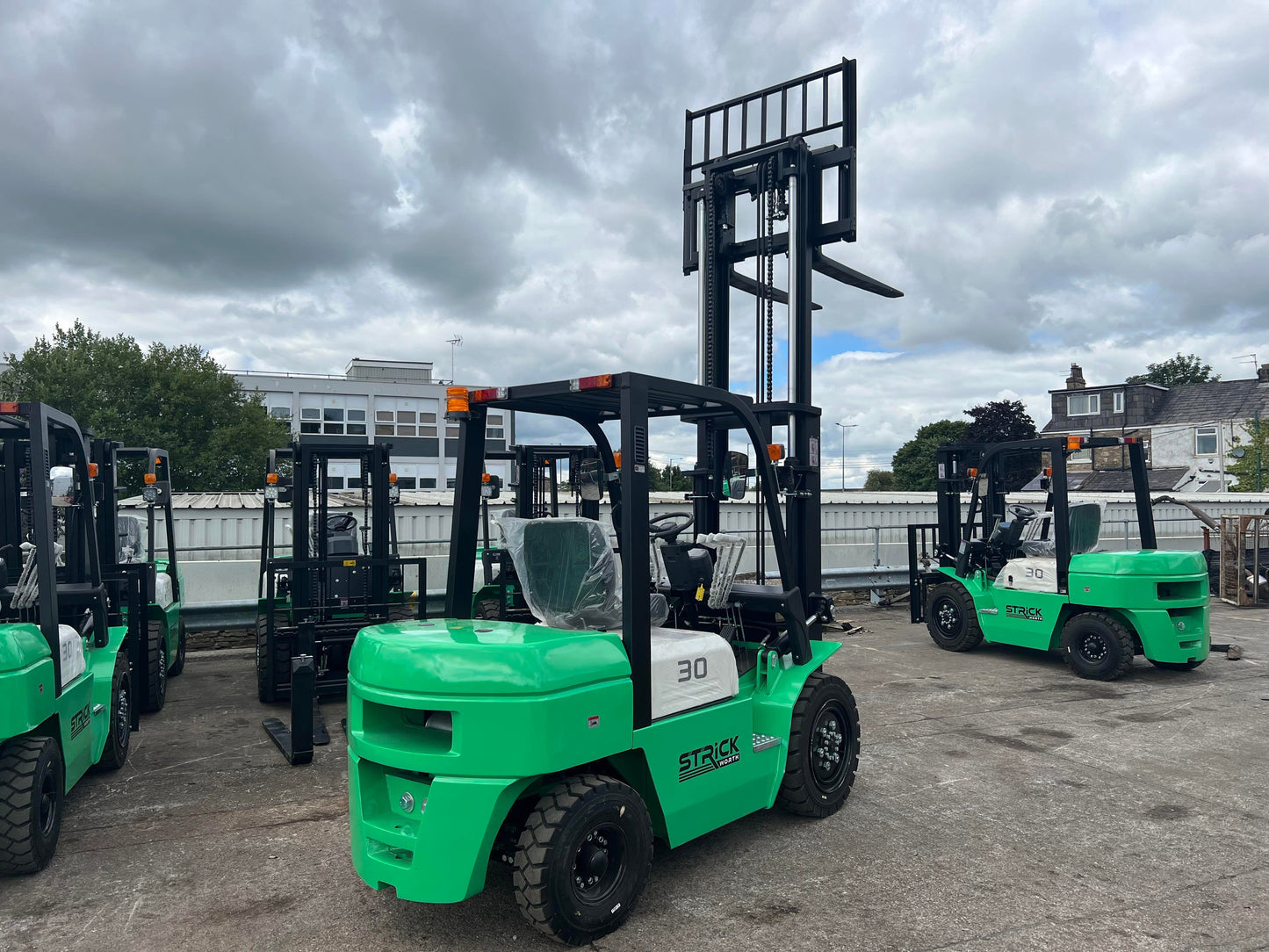
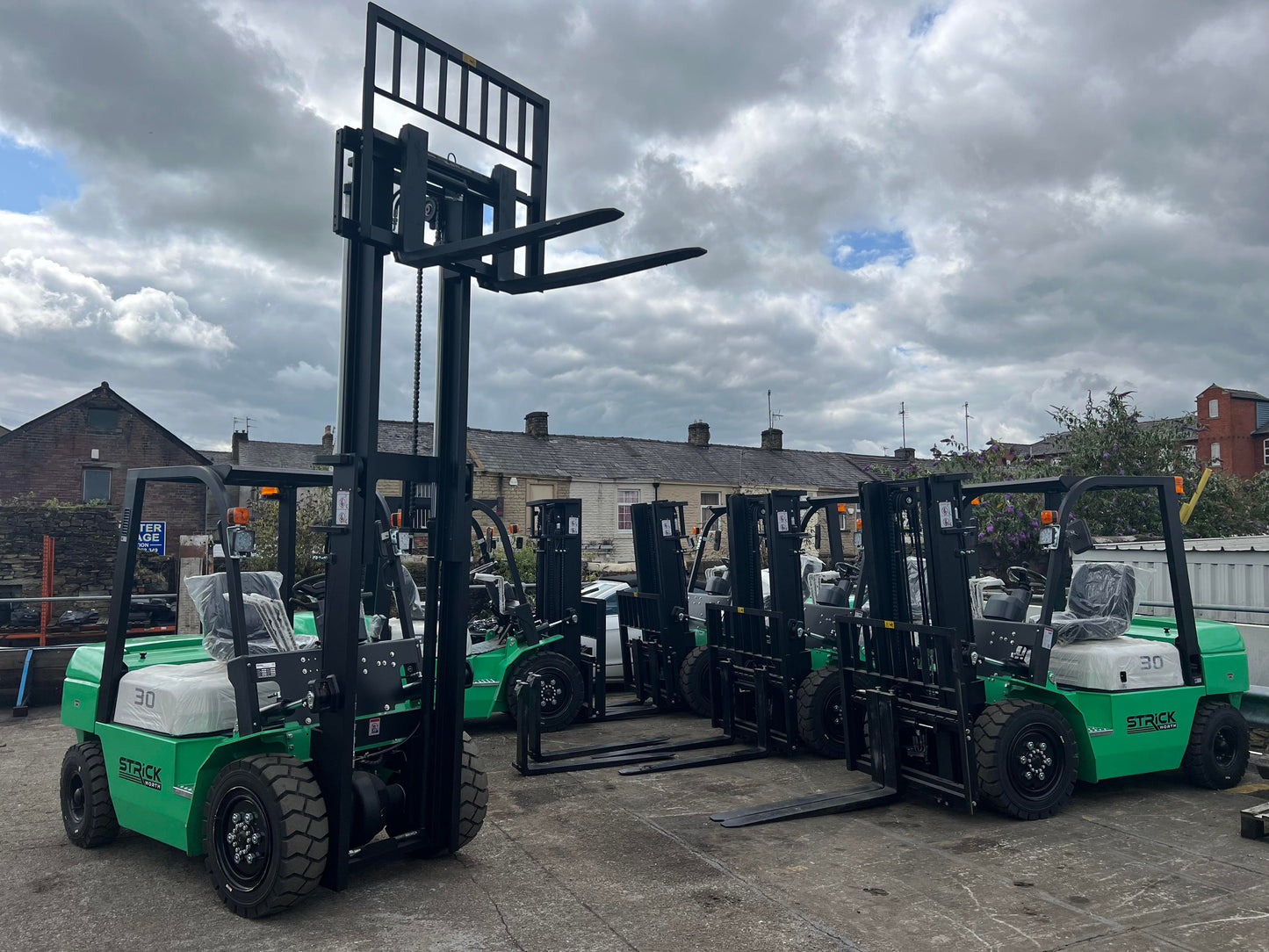

CE Marked
The Strickworth SW30 is a cutting-edge forklift with a 3-ton capacity, compliant with EEA's strict health, safety, and environmental standards, ensuring both performance and European-certified quality.

Powerful Engine
Our model boasts a robust 4-cylinder engine, designed to deliver consistent and powerful performance every time.

Value for Money
The forklift boasts a compact design suitable for diverse settings, a 40KW engine for powerful performance, essential safety features for assurance, and offers high quality at an affordable price.
Frequently Asked Questions
Where can I get operator manuals, parts and service literature, and parts for my STRICKWORTH Forklift Truck?
Operator's manuals, parts and service literature, as well as genuine STRICKWORTH service parts for your STRICKWORTH lift truck, can be obtained from your STRICKWORTH dealer. When ordering service literature and parts, please have the full STRICKWORTH serial number ready for your dealer
How old is my STRICKWORTH Forklift?
Date of shipment information can be obtained by sending an email request to support@strickworth.com. Please provide the complete serial number of the STRICKWORTH lift truck
Where can I find the STRICKWORTH serial number on my STRICKWORTH Forklift truck?
You can find the serial number stamped into the frame. Depending on the age or model of the STRICKWORTH lift truck, you may find the serial number stamped into the frame exterior, the cowl exterior, or a fender.
Can I still get an operator's, parts, or service manual for my old STRICKWORTH Forklift truck?
Digital copies of STRICKWORTH operator's, parts, and service manuals for many older STRICKWORTH lift trucks are available upon request. To inquire about manual numbers and availability, please email support@strickworth.com. Ensure you provide the full STRICKWORTH serial number.
What are the prices of STRICKWORTH operator's, parts, and service manuals?
The cost of STRICKWORTH operator's, parts, and service manuals can vary based on the age of the STRICKWORTH lift truck and the manual's size
I am considering buying a used STRICKWORTH forklift truck. What is the average value?
Your STRICKWORTH dealer can provide average values for used STRICKWORTH lift trucks. However, STRICKWORTH Material Handling Company does not offer this information directly
What is STRICKWORTH'S position concerning the use of forklifts as personnel elevators?
STRICKWORTH strongly recommends against using lift trucks as personnel elevators. Such use can lead to accidents due to improper maintenance, operation, or inadequately designed platforms. It's always best to use equipment specifically designed for the intended purpose.
While general-purpose STRICKWORTH lift trucks aren't designed as personnel elevators, OSHA and ANSI safety standards do allow certain attachments. However, STRICKWORTH neither sells safety platforms nor endorses their use on lift trucks. This caution is emphasized in our operator's manuals, training courses, labels on the machinery, and other materials.
If you're considering using lift trucks in this manner, it's crucial to familiarize yourself with OSHA and ANSI safety standards and procedures. The STRICKWORTH Employer's Guide to Material Handling Safety provides detailed information on this topic, especially the necessary training for operators. This guide can be obtained from your STRICKWORTH dealer.
In conclusion, STRICKWORTH urges against using lift trucks for elevating personnel. There are specialized products designed for overhead work, and we believe they are the safest and most appropriate choice for such tasks.
What should I know about operating STRICKWORTH forklifts/lift trucks or other material handling equipment on grades, ramps, slopes, and inclines?
When operating on grades, it's essential to prioritize safety. Here are five key guidelines to follow with STRICKWORTH equipment:
Choose the Right Equipment: Only utilize equipment specifically designed for grade operations, such as sit-down lift trucks, stand-up counterbalanced lift trucks, and pallet trucks. Avoid using narrow aisle and very narrow aisle trucks on grades.
Limitations of Stand-Up Counterbalanced Trucks: These trucks are suitable for short grades, like dock plates with an incline up to 15%. However, they shouldn't be used on extended grades.
Safe Travel on Grades: Always move slowly when navigating grades. Avoid making turns or crossing grades sideways. Always turn on level ground.
Load Positioning: Typically, all lift trucks, excluding pallet trucks, should operate with the load facing uphill. When the truck is unloaded, operate with the forks or attachment facing downhill. Ensure the load is tilted back and elevated just enough to avoid ground contact.
Pallet Truck Guidelines: When using pallet trucks on grades, maintain the forks in a downward position and keep them raised. Never ride pallet trucks on an incline. They are designed to handle up to a 5% grade with a load.
What is the difference between floor loading and wheel loading?
Floor loading refers to the maximum weight a floor can support under specific conditions. This measurement is distinct from wheel loading, which denotes the weight each wheel of an industrial truck bears. It's crucial to note that wheel loading does not equate to floor loading.
Both the Industrial Truck Association and the American Institute of Architectural Engineering emphasize that building structures vary significantly. As such, precise recommendations require a comprehensive technical assessment of the specific building. STRICKWORTH aligns with this perspective.
There isn't a straightforward rule or formula for determining floor loads. It's not advisable to attempt creating one. If you need to specify floor loads, a qualified civil or architectural engineer should calculate them using truck specification data from STRICKWORTH.
For current STRICKWORTH models, and many older ones, wheel (or axle) loading data is provided in the specification sheets. If you need detailed floor loading insights, it's imperative to consult a qualified civil engineer or architect.
Specification sheets for STRICKWORTH's current production models include both front and rear axle weights in loaded and unloaded states, along with tire details. This data equips civil engineers or architects with the necessary information to assess a lift truck's compatibility with a particular floor or slab, applicable to both cushion (solid) and pneumatic tire trucks.



























